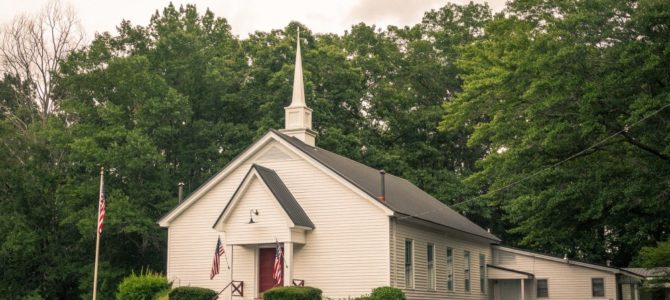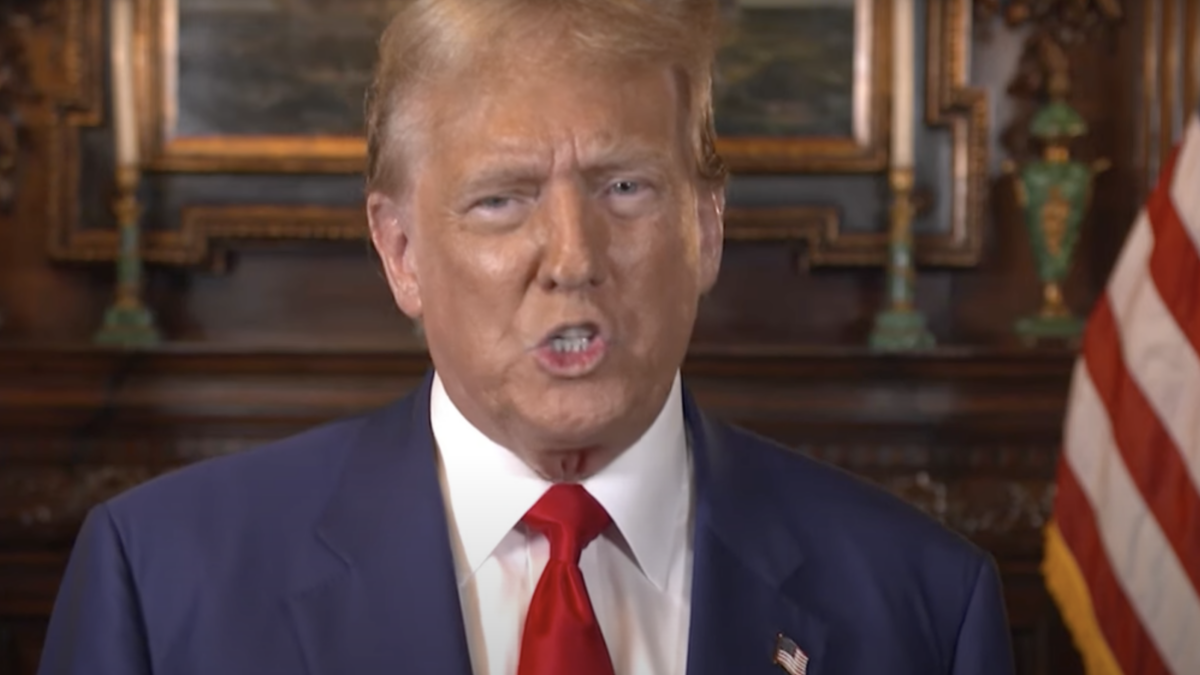
Last week, the Southern Baptist Convention (SBC) adopted a resolution calling for the “immediate abolition of abortion without exception or compromise,” and for the convention to “lament any complicity” in pro-life incrementalism, which “compromises God’s holy standard of justice” by establishing “incremental, regulatory guidelines for when, where, why, and how to obtain legal abortion of innocent preborn children.”
The Tennessean wrote that the resolution, as passed, “blasts ‘traditional pro-life laws,’ and that its passage “marks a shift in the formally held viewpoint of the convention.” The New York Times reports that it “calls for the abolishment of abortion and denounc[es] the incremental approach.”
This position — known as abolitionism — was not always so welcome in the SBC, to put it mildly. In fact, from the beginning, those who came to this position have waged an uphill battle.
How Abolitionism Began Within Baptist Walls
A decade ago, a small group within a Southern Baptist church in Norman, Oklahoma met to discuss supporting the pro-life movement. Leading the discussion was assigned to a graduate student in history at the University of Oklahoma.
In preparation, he browsed the websites of prominent pro-life organizations. His historical studies simultaneously led him to the works and biographies of William Wilberforce, William Lloyd Garrison, Elizabeth Heyrick, and other abolitionists who demanded the immediate abolition of the evil of their age in the name of Jesus Christ.
Reading about both the pro-life and abolitionist movements at the same time, he was struck by how little the tactics and messaging of the former had in common with the latter. It was clear to him that the pro-life movement needed reform.
The group was intrigued and excited by his findings, and the Abolitionist Society of Norman was founded as a ministry within an SBC church. The abolitionist movement had been reignited.
Unrelated frictions eventually frayed relationships between leaders of the ministry and leaders of the church, which led to frictions about abolitionism. The elders were jarred by the seeming accusation of the society that supporting the pro-life movement wasn’t enough: that for our Christianity to be “vital,” in Wilberforce’s framing, we have to repent of apathy and compromise. Many of the core people within the society, some of whom were on staff at the church, were disfellowshipped.
Undeterred, the society continued their activism at a new church, and dozens of similar societies sprouted all around the country. In 2016, the growing numbers of abolitionists finally got the break they had been working and praying for.
After meeting with two abolitionists — one the aforementioned history student — Oklahoma state Sen. Joseph Silk filed the first bill to abolish abortion immediately in explicit defiance of Roe v. Wade. Two years later, Oklahoma state Rep. Dan Fisher became the first abolitionist gubernatorial candidate.
The campaigns to support Fisher and the Abolition of Abortion in Oklahoma Act did not succeed in making Fisher governor or abolishing abortion in Oklahoma, but they succeeded beyond abolitionists’ wildest imaginations in growing the movement. Abolitionists had arrived onto the political scene and were increasing rapidly in number and organization.
Grassroots Baptists Get Fired Up about Babies
On February 21, 2019, the Baptist General Convention of Oklahoma (now called Oklahoma Baptists) published an open letter to every Southern Baptist church in the state explaining that they, as a convention, were going to oppose Silk’s abolition bill. The response from Southern Baptists in the state was swift and severe.
A Southern Baptist “The BGCO Doesn’t Speak For Us” rally was held at the state capitol. Pastors organized roundtable responses to their convention’s leaders. Incensed Baptists flooded the BGCO inboxes.
This momentum did not fizzle out. The pastors leading the charge connected with Oklahoma abolitionist organizations. They passed denominational resolutions at the state level demanding abortion’s immediate abolition. They started new abolitionist organizations, including Southern Baptists for Abolishing Abortion, Rescue Those, Proclaim Liberty Initiative, and Liberty Rising. At long last, the clergy had joined the abolitionist cause.
Once a few pastors enlisted, dozens and then hundreds more followed. Among the first was Jeff Durbin of Apologia Church, who shepherded his congregation and massive online following in an abolitionist direction.
The most stunning pastoral conversion came when BGCO president Blake Gideon, who had co-authored the letter opposing immediate abolition in 2019, joined the ranks of the abolitionists in 2020. No longer were abolitionists ecclesiological outcasts. Now, they were thundering the cause of equal and immediate justice for preborn children from the pulpits that once opposed them. The paradigm had shifted.
Sights Set on Nashville
In January 2020, Pastor Dusty Deevers of Grace Community Church in Elgin, Oklahoma organized a coalition of SBC pastors to begin drafting the Southern Baptist Resolution on Abolishing Abortion. Knowing they had much work to do in convincing the convention of ideas many were unfamiliar with, and that there would likely be attempts to water down the language, they built an extensive and detailed theological argument.
The movement that had been reignited by T. Russell Hunter at an SBC church in Norman a decade earlier was on a collision course with pro-life compromise at the annual meeting of the largest denomination in the United States.
The abolitionists arrived in Nashville outgunned in every respect but two. First, and most importantly, they were equipped with a more powerful set of biblical ideas than their incrementalist opponents: namely, that abortion is murder; it ought not continue another second; and that Christ is King.
But powerful ideas that aren’t heard are a tree falling in the forest. The abolitionists also had the passion and determination to make abolitionism understood. Taking pamphlets to the streets — the longtime modus operandi of abolitionism — they put nearly 10,000 abolitionist booklets in the hands of SBC messengers, or voting members of the convention.
Taking on the Committee
The battle was uphill from the start, as abolitionists expected. The SBC Resolutions Committee declined the resolution, arguing that the murder of preborn children was sufficiently addressed by a funding resolution: “[T]he Committee believes Resolution #3 addresses these issues in the context of the current threats to the Hyde Amendment and related pro-life appropriations riders in the United States Congress.”
Yet the committee approved Resolution No. 8 regarding the ongoing genocide of the Uyghur people in China. This resolution, as opposed to Resolution No. 3, called for the Chinese government to “cease its program of genocide against the Uyghur people immediately” (emphasis mine).
Following the vote on the ten resolutions approved by the committee, abolitionist Pastor Bill Ascol motioned to force the committee to bring the Resolution on Abolishing Abortion before the full convention. Overriding the committee takes a two-thirds majority, which, according to Ascol, had not been successfully accomplished since at least 1979. But more than 80 percent voted in favor. The resolution was scheduled for deliberation at 3 p.m. the next day.
When it was brought forward, Ascol again spoke in support, followed by two more testimonies in favor of the resolution and two against. A motion was made by messenger David Norman to table the resolution, effectively killing it.
Norman argued, “This resolution requires that we walk back from every pro-life resolution we’ve passed.” Ascol refuted this, saying: “This resolution doesn’t walk anything back. It walks us forward toward the immediate abolition of abortion without exception or compromise.” The motion to table was roundly defeated.
A messenger then offered an amendment to add “alone” to article 14 of the resolution, so it would read, “RESOLVED, that we will not embrace an incremental approach alone to ending abortion because it challenges God’s Lordship over the heart and the conscience, and rejects His call to repent of sin completely and immediately (Gen 3:1; John 8:44; Rom 2:14-15; 2 Corinthians 11:3).”
The amendment passed, making nonsense of the 14th article. It doesn’t compute that we should pursue both incrementalism and immediatism if incrementalism “challenges God’s Lordship over the heart and the conscience, and rejects His call to repent of sin completely and immediately.” Yet still, the full resolution makes a strong, definitive statement for the immediate end to legalized abortion.
Immediately following the amendment, Ascol called for the final vote. Everyone in favor raised their yellow voting cards, followed by a substantially smaller amount of messengers raising theirs in opposition. One decade after being sent into exile by an SBC church, abolitionism had become the official position of the largest Protestant denomination in the United States.









